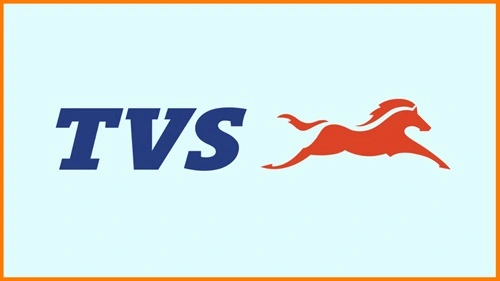TVS Motor Company is one of India’s largest two-wheeler and three-wheeler manufacturers, known for its innovation, quality, and customer-centric approach. The company, part of the TVS Group, has a global presence in over 80 countries and continues to expand its market reach. It produces a wide range of motorcycles, scooters, mopeds, and three-wheelers, catering to a diverse demographic. This SWOT analysis provides insights into TVS Motor’s current strengths, weaknesses, opportunities, and threats for 2024.

Current Overview of TVS Motors:
In 2023, TVS Motor Company achieved significant growth with increased sales across its two-wheeler segments. The company recorded a strong domestic sales performance, benefiting from India’s expanding middle class and urbanization, which has driven demand for personal mobility solutions. TVS also made strides in the electric vehicle (EV) market, capturing a significant share in the electric scooter segment.
Strengths:
1. Brand Equity and Market Leadership: TVS has strong brand recognition in India, with its products synonymous with reliability and performance. The company’s flagship models, such as TVS Apache and TVS Scooty, are leaders in their respective segments.
2. Innovation and R&D Excellence: TVS is renowned for its innovation, regularly introducing new technologies and models tailored to evolving market demands. Its research and development efforts ensure the company stays competitive in a rapidly changing automotive landscape.
3. Strong Distribution Network: TVS has an extensive network of dealerships and service centers across India and in international markets. This widespread reach allows the company to maintain high customer satisfaction and brand loyalty.
4. Electric Vehicle (EV) Development: TVS has invested heavily in the electric mobility space, launching several EV models to capitalize on the growing demand for clean transportation. It now holds a strong position in the electric scooter market.
Weaknesses:
1. Limited Global Penetration: Despite its international presence, TVS’s market penetration outside India remains limited compared to global competitors like Honda and Yamaha. The company needs to strengthen its position in key overseas markets.
2. Overdependence on the Indian Market: A significant portion of TVS’s revenue is derived from India, making the company vulnerable to economic slowdowns and regulatory changes in the country.
3. Profitability Constraints: TVS lags behind some of its competitors in profitability, which could limit its ability to invest in large-scale innovations and market expansions.
4. Slow Adoption of Advanced Technologies: While TVS has made strides in EVs, the company has been slower than competitors in adopting cutting-edge technologies such as artificial intelligence and IoT in its operations.
Opportunities:
1. Growth in the Indian Two-Wheeler Market: India remains one of the fastest-growing markets for two-wheelers, driven by increasing disposable incomes and urbanization. This presents an opportunity for TVS to capture a larger market share through new product launches and strategic pricing.
2. Expansion in Electric Vehicles: The global shift towards sustainable mobility offers TVS significant growth opportunities in the EV segment. By expanding its electric vehicle lineup and investing in advanced battery technology, TVS can strengthen its leadership in this growing sector.
3. International Market Expansion: With rising demand for affordable two-wheelers in emerging markets like Southeast Asia and Africa, TVS has the opportunity to diversify its revenue streams by expanding its international presence.
4. Partnerships and Collaborations: TVS can leverage strategic partnerships with global brands to enhance its R&D capabilities and develop more advanced, competitive products. Collaborations can also open up new market avenues.
Threats:
1. Intense Competition: TVS faces stiff competition from both domestic players like Hero MotoCorp and Bajaj Auto and international brands like Honda and Yamaha. This competitive environment can impact TVS’s market share and pricing power.
2. Rising Input Costs: Increases in raw material prices, particularly for steel and aluminum, could compress profit margins, forcing TVS to adjust pricing strategies.
3. Government Regulations: Stringent environmental and safety regulations, both in India and globally, could pose compliance challenges, requiring significant investments in R&D and production modifications.
4. Technological Disruptions: As the automotive industry increasingly shifts towards AI-driven and connected technologies, TVS must adapt quickly or risk losing out to competitors who are more agile in implementing such advancements.
Future Plans:
Looking forward, TVS Motor Company is doubling down on its electric vehicle strategy. The company plans to introduce more electric two-wheelers and expand its EV production capacity to meet rising demand. Additionally, TVS is focusing on enhancing its presence in international markets, with a particular emphasis on Africa and Southeast Asia. The company is also exploring opportunities to collaborate with global tech firms to integrate advanced digital solutions and enhance customer experience.
Conclusion:
TVS Motor Company stands out as a resilient and innovative leader in the Indian two-wheeler market. With its strong brand equity, extensive distribution network, and growing presence in the electric vehicle sector, TVS is well-positioned to capture future growth. However, the company must address its global expansion limitations and enhance profitability to stay competitive. By leveraging new opportunities in electric mobility and maintaining a customer-centric approach, TVS Motors can solidify its position as a key player in the global automotive industry.